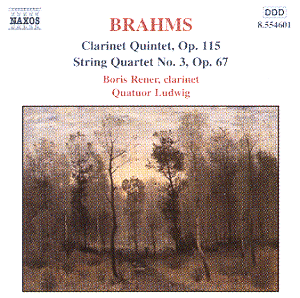 Composer: Johannes Brahms (1833-1897)
Composer: Johannes Brahms (1833-1897)
Works: Violin Concerto in D major, Op. 77; Ludwig van Beethoven (1770-1827) Violin Concerto in D major, Op. 61
Performers: Nathan Milstein (violin), Pittsburgh Symphony Orchestra conducted by William Steinberg
Recorded: Syria Mosque, Pittsburgh, January 1955; November 1953 & April 1954
Label: EMI Great Recordings of the Century CDM 5 67583 2
Duration: 75:33
In the realm of recorded violin concertos, few interpretations resonate with the same historical significance and interpretative depth as Nathan Milstein’s readings of the Brahms and Beethoven concerti, captured in this EMI release. Both pieces, emblematic of their respective composers’ distinct stylistic languages, are performed with a commanding authority that speaks to Milstein’s artistry at the zenith of his career.
Milstein’s interpretation of Brahms’s Violin Concerto in D major, Op. 77, is particularly compelling. From the outset, he navigates the opening orchestral exposition with a sense of grandeur that is quintessentially Brahmsian, replete with the composer’s characteristic blend of lyricism and architectural integrity. The Pittsburgh Symphony, under the astute leadership of William Steinberg, provides a robust and nuanced backdrop that enhances the soloist’s voice rather than overshadowing it. Steinberg’s collaborative spirit is evident; his careful balancing ensures that the orchestra’s textures, ranging from the lush strings to the brass’s emphatic declarations, do not obscure Milstein’s often soaring melodic lines.
Milstein’s choice of cadenzas, which he crafts himself, deserves special mention. They are infused with a personal language that aligns seamlessly with Brahms’s idiom. In the first movement, as he navigates the intricate passages, one particularly notes his ability to combine technical prowess with a deep emotional resonance. The cadenza, as Milstein approaches its climax, reflects a perfect synthesis of virtuosity and expressivity, culminating in a full-bodied tone that recalls the rich timbral qualities of the human voice—a hallmark of his style.
Turning to the Beethoven Concerto, Milstein’s performance is marked by a similar commitment to lyrical beauty and structural clarity. Here, the interplay between soloist and conductor reveals a profound understanding of the piece’s classical roots. The second movement, Adagio un poco mosso, is treated with an almost reverential grace. Milstein’s phrasing is exquisitely shaped, allowing the melodic line to unfold naturally, while the orchestra provides a delicate cushion of support. This is in stark contrast to some contemporary interpretations that favor a more aggressive approach, often losing sight of the movement’s introspective qualities.
The engineering of these recordings, though mono, is remarkably effective for the era, capturing the warmth of Milstein’s tone and the orchestral detail with commendable clarity. One can hear the subtle nuances of Milstein’s bowing techniques—the slight inflections and dynamic swells—without the muddiness that often plagues older recordings. EMI’s sound engineers have preserved the essence of the live performance experience, which is no small feat given the technological limitations of the time.
Historically, both concertos occupy pivotal positions in the violin repertoire. Beethoven’s work, heralded as one of the cornerstones of the violin canon, and Brahms’s concerto, a late Romantic synthesis of classical form and emotional depth, reflect the evolution of the solo concerto form from the classical to the romantic era. Milstein’s interpretations serve not only as a testament to his interpretative genius but also as a valuable lens through which we can understand the shifting paradigms of violin playing and interpretation.
In conclusion, this EMI recording of Milstein’s performances is a distinguished addition to the canon of violin concerto recordings. His collaborations with Steinberg and the Pittsburgh Symphony are not merely performances; they are profound musical dialogues that resonate with historical significance and interpretative insight. While the marketplace is replete with countless interpretations of these masterpieces, Milstein’s artistry in these recordings stands as a benchmark. This is not merely a recommendation; it is a call to experience the artistry of one of the greats in the tradition of violin performance. Strongly recommended.



